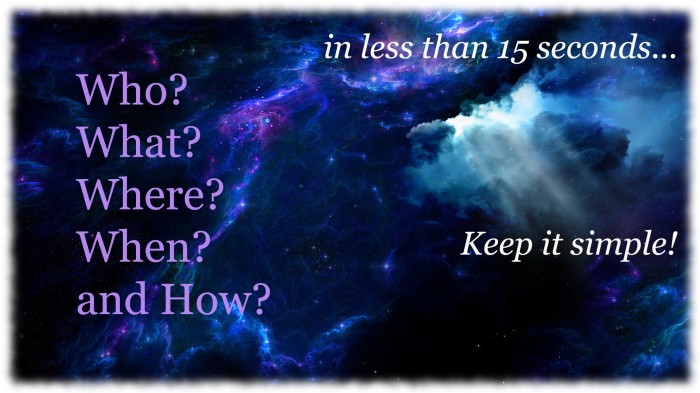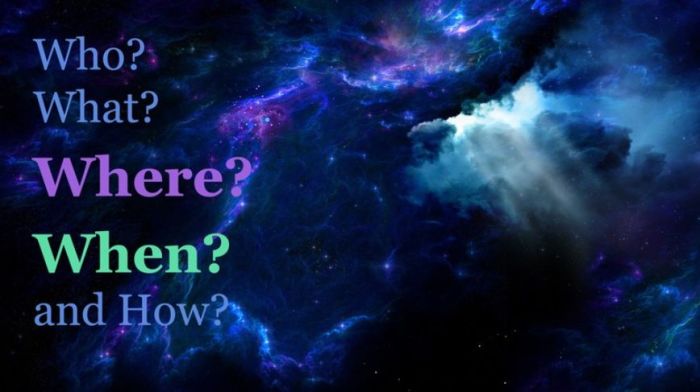
by Caledonia Skytower
Part 6. Tying it all together (Final)
This series has covered a lot of territory this year, and I am changing the ending of it somewhat, as it feels like we are reaching a point where everything is impacted by the answer to this basic question: what do you want?
This answer is key to how you interpret many of the points made in this series. What you want out of your event promotion is defined by what your long range goals are for your event. There is no wrong answer to the question. Not all viable paths are exactly the same.
If what you want is a nice, cosy intimate gathering of friends every once in a while, then a lot of the ideas that I have shared are irrelevant and unimportant. If you want to create a closed community of like-minded, like-interested individuals, similarly some of these practices will be helpful, and some are not for you. If you want to grow your events or your venue into something more than either of those, then roll up your sleeves and be prepared to get messy and stay messy for a while. Growth requires consistency, connections, and constant vigilance! (invoking Madeye Moody). I am going to tie a number of these concepts together in this final post.
Are you on the grid, but not on-line? “On-line” off-world can manifest itself in a number of ways. Do you have a website or blog presence? Do you post your events in social media – either Facebook or Google+ at the very least? These are all pathways to furthering your reach and promotional impact.

A website or blog presence. The more complex your schedule, the more you need something like this to answer the question “who are you, and what do you do?” Beyond the simplest of operations, it gives you somewhere to send people when they ask for more information. Remember from the very first post, The Basics – Who? What? Where? When? How? – always leave people knowing where to find more. That can be as simple as an event calendar, or a single blog page. Blogger (by Google) and WordPress make it incredibly easy for the non-html-savvy person to create and maintain a simple blog for free. Google even offers a domain service for US $12 a year, which is very reasonable. But don’t take my word for it, look around and see what tools fit best for you. There are lots of accessible options.
You can’t be in your venue 24/7, or available to answer questions from interested residents all the time. So make it easier for them to answer basic questions on their own. Things that you can include on you site/blog could include:
- Calendar
- Your grid location – “SLurl”
- Additional details on upcoming events or programs
- Who to contact in-world
- Links to the web presence of others that you are affiliated with
- Links to other on-line presences: Facebook, Google+, Flickr, Twitter, Instagram etc.

Social media. It is important to emphasize that social media is not a guaranteed direct promotional source. It is true that some people have great success with social media event postings, but their common usage is far from wide-spread. I suspect that some people have gathered around them groups of people who use the same tools, and that is why it works better for some people than for general public recruitment. Both Facebook and Google+ have event functions, and they also both have Groups or Communities for different virtual world enterprises. Use their search functions to find groups that you can join where it would be appropriate for you to post your information. Be sure to read group/community guidelines and rules carefully. More posts are not better if your “singing to the wrong audience.”
This is important: copious posting in social media will not guarantee you a full venue or an SRO event. Why? Because most standard postings only reach 5% of their potential audience. Unless you do nothing else but watch social media and post repeatedly (which I do not recommend), things will get missed. Do not post about a single event more than once in 24 hours. The 5% who do see your posts will start to ignore you.
On average, social media is not a means of direct promotion (i.e. “butts in seats”), but a way of raising consciousness. You may get the odd person wander in because they saw you in a Google+ community. It is more likely that they will have seen your social media posts and then run into some mention of you while logged in and think, “oh yeah, I have heard of them.” That kind of casual exposure is as crucial as direct promotion. You need them both.
Get your audience working for you, by regularly encouraging them to use whatever means exists in that social media tool to “like”, “plus”, “share”, “re-tweet” or whatever. By doing so they assist you in extending the life of the post and keep it higher up on the feed to the greater potential audience. If it helps, think of these functions like touches. Plenty of people see your post. But a post that is seen but not touched sinks to the bottom quickly. The more your post is touched, the higher it floats. Likewise, if you want to be helpful for an endeavour you like or support, touch their posts in whatever way the media provides.
 A Basic rubric for social media promotional posting:
A Basic rubric for social media promotional posting:
- Text Only Posts (lowest number of views)
- Post with a link to a site/blog (higher)
- Post of an image or picture with details (even higher)
- Post of a video clip (highest number of views)
- Posts with cute puppies and kittens . . . okay, not even going THERE!
Constant Vigilance! So you’ve done it all. You have:
- Answered (or are answering) the basic questions – Who? What? Where? When? How?
- You have crafted your message in words, and shared those words with people who can spread your story around.
- You have created consistent, strong visual images that easily identify your venue and events – created a “brand.”
- You have built a network of synchronistic enterprises and individuals who share information for mutual benefit.
- You have established and maintained an on-line presence that informs people of who you are, what you have done, and are doing.
What now? Sit back and watch all the good people flow in? No, my friends. Once you build a promotional machine you not only have to feed and water it, but you have to make sure all the parts are still working to their optimal capacity. Regularly (minimum every six months) evaluate where you are spending your resources, and how effective the results are. Give things time to work and develop, but don’t be afraid to stop promoting where there are no measurable results.
Who posts your press releases? What exposure are you getting outside of your own venue or endeavour? What does your traffic look like in-grid, and on-line? Know how your current audience found you – ask them! That’s most likely where you’ll find new audiences. What is your ratio of new to returning audience/participants? Empower your existing audience to be “roaring lions” on your behalf. Be creative. Make it fun!
Be prepared to adjust things, try new things, and always be evaluating. What worked dependably for years may not work as well any more. Be prepared to refresh everything at all levels. Be aware of what others, engaged in similar enterprises, are doing: where are they posting, promoting. Don’t miss an opportunity to turn the competition into a colleague – developing mutually beneficial relationships where everyone wins.
When things seem to be going nowhere, or you find yourself frustrated, go back to the basics: Who? What? Where? When? How? And most importantly for you personally, always be able to answer the question “Why?”
***
My profound thanks to Inara for her support and patience with this series, and to everyone who has enjoyed it, and left such great comments. I look forward to seeing you all around the grid.
~ Slainté!
***
Read the Entire Series
If You Just Build It… has been a multi-part guest series this year. To read posts you might have missed, follow the links below.















